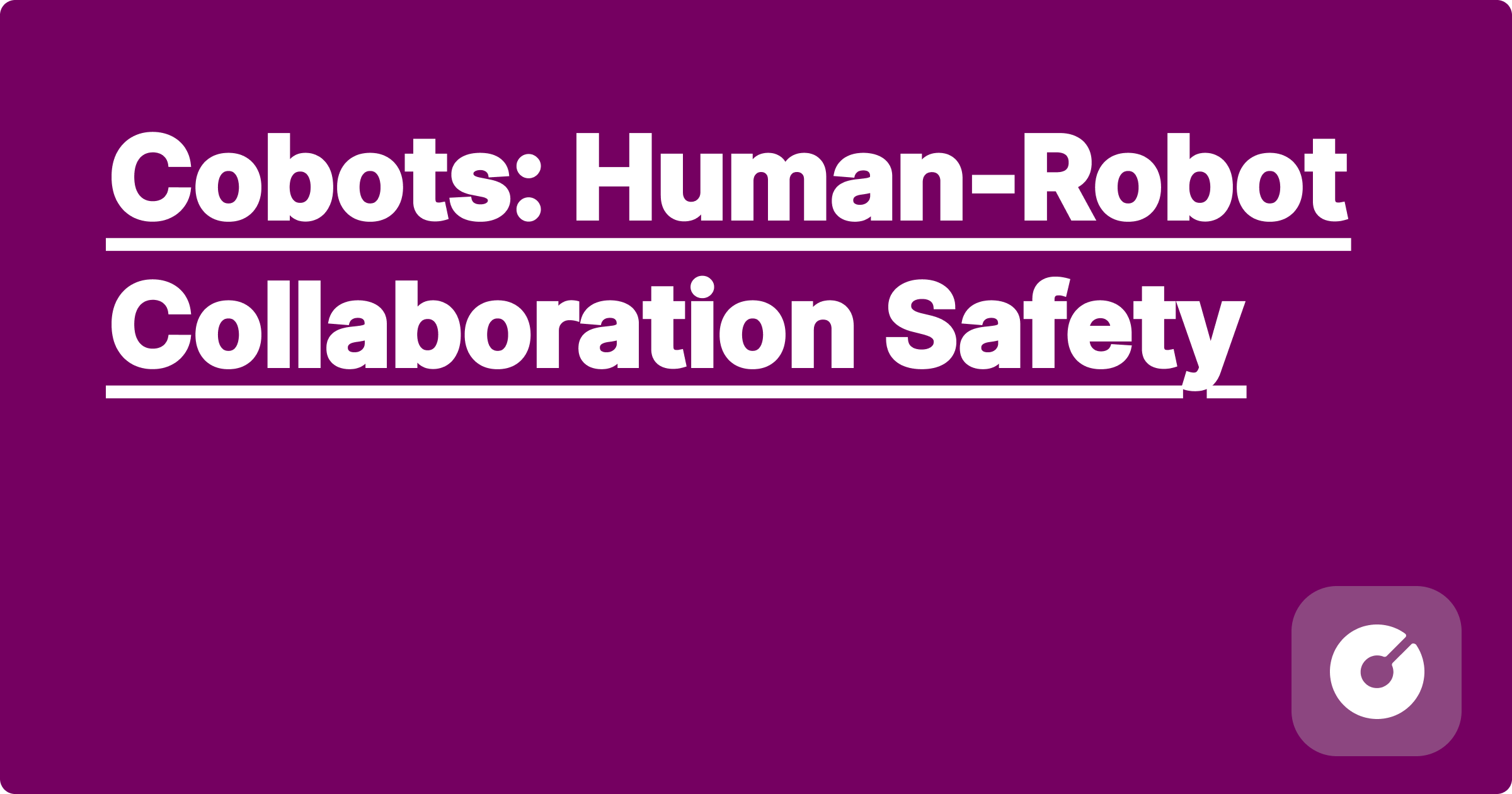
where \(g(x)\) is a function that represents the distance to the safety boundary. Control Barrier Functions (CBFs) [cite relevant paper] are powerful tools for ensuring that the robot's trajectory remains within the safe region.
This blog post explores the cutting-edge research and practical applications of ensuring safety in human-robot collaboration (HRC) scenarios, focusing on collaborative robots (cobots). We will delve into advanced techniques, real-world implementations, and future directions, aiming to equip researchers and practitioners with the knowledge to design and deploy safe and effective cobot systems.
Recent advancements in sensor fusion techniques, leveraging LiDAR, cameras, and tactile sensors, are crucial for robust perception in dynamic HRC environments. A promising area is the use of event-based cameras [cite recent paper on event-based vision for HRC], which offer significant advantages in terms of power efficiency and temporal resolution compared to traditional frame-based cameras. This allows for faster reaction times to unexpected human movements. Another emerging technique involves the incorporation of AI-powered predictive models [cite preprint on predictive modeling for human motion] to anticipate human actions and proactively adjust robot behavior.
Beyond reactive collision avoidance, research is focusing on proactive safety mechanisms. One approach is to employ learned potential fields [cite relevant paper] to guide the robot's trajectory while maintaining a safe distance from humans. The following Python code demonstrates a simplified implementation of a potential field-based controller:
import numpy as np
def potential_field(robot_pos, human_pos, K_rep, K_att, goal_pos):
# Repulsive potential
dist = np.linalg.norm(robot_pos - human_pos)
if dist < 0.5: # Safety distance
repulsive_force = K_rep * (1/dist - 1/0.5) * (robot_pos - human_pos) / dist
else:
repulsive_force = np.array([0,0])
# Attractive potential
attractive_force = K_att * (goal_pos - robot_pos)
# Resultant force
resultant_force = attractive_force + repulsive_force
return resultant_force
# Example usage
robot_pos = np.array([0,0])
human_pos = np.array([1,1])
goal_pos = np.array([2,2])
K_rep = 10
K_att = 5
force = potential_field(robot_pos, human_pos, K_rep, K_att, goal_pos)
print(force)
The computational complexity of this algorithm is O(1), making it suitable for real-time applications. However, more sophisticated algorithms, such as those based on Model Predictive Control (MPC) [cite relevant paper], are being explored to handle more complex scenarios.
Current research emphasizes shared autonomy, where humans and robots collaboratively achieve tasks. This requires intuitive interfaces and robust communication mechanisms. For example, researchers at [University/Lab Name] are developing a system that uses gesture recognition and natural language processing to allow humans to seamlessly guide and instruct the robot [cite ongoing project].
Formal methods are increasingly used to verify the safety of cobot systems. For example, we can model the robot's workspace as a set of states \(X\) and define a safety region \(S \subset X\). The robot's dynamics can be described by a differential equation:
\(\dot{x} = f(x, u)\)
where \(x \in X\) is the robot's state and \(u\) is the control input. The safety constraint can be expressed as:
\(g(x) \ge 0, \forall x \in X\)
The effectiveness of safety algorithms depends heavily on their implementation and the computational resources available. We need to consider factors like sampling rates, latency, and the computational complexity of the algorithms. Benchmarking against established metrics [cite relevant benchmarks] is crucial for evaluating the performance of different approaches. For example, we can measure the response time to unexpected human movements or the success rate in avoiding collisions under various conditions.
Companies like [Company A] are using cobots in their assembly lines, employing advanced safety systems to ensure worker safety [cite specific project]. [Company B] has integrated cobots into their logistics operations, using sensor fusion and reactive control to navigate crowded warehouse environments [cite specific project].
Several open-source libraries and frameworks are available for developing and deploying cobot safety systems. ROS (Robot Operating System) is a widely used platform that provides tools for robot control, sensing, and perception. Libraries like [Library A] and [Library B] offer functionalities for implementing advanced safety algorithms.
Start by familiarizing yourself with ROS and its relevant packages for robot control and sensor integration.
One common pitfall is underestimating the complexity of human behavior. Humans can be unpredictable, and safety systems must be designed to handle unexpected actions. Another challenge lies in accurately calibrating sensors and tuning control parameters to achieve optimal performance without sacrificing safety.
Always thoroughly test your safety system in simulated environments before deploying it in real-world settings.
Future research should focus on developing proactive safety systems that anticipate potential hazards rather than merely reacting to them. This requires incorporating advanced AI techniques, such as reinforcement learning and predictive modeling, to anticipate human actions and proactively adjust robot behavior.
Addressing the challenges of cobot safety requires a multidisciplinary approach, involving expertise in robotics, computer science, human factors engineering, and cognitive psychology. This interdisciplinary collaboration is crucial for designing safe and effective human-robot interfaces and understanding human behavior in HRC settings.
The increasing deployment of cobots raises important ethical and societal implications. Issues such as job displacement, algorithmic bias, and data privacy need to be carefully considered and addressed. Open dialogue and collaborative efforts are needed to ensure that cobots are used responsibly and benefit society as a whole.
Ensuring safety in human-robot collaboration is crucial for the successful adoption of cobots in various industries. This blog post has explored the latest advancements in this field, covering advanced sensing techniques, reactive and proactive control algorithms, practical implementation considerations, and future research directions. By combining cutting-edge research with practical insights, we can build safe, efficient, and ethically sound cobot systems that benefit both humans and robots.
```
```html
```
Anesthesiology Career Path - Behind the OR Mask: A Comprehensive Guide for Pre-Med Students
Internal Medicine: The Foundation Specialty for a Rewarding Medical Career
Family Medicine: Your Path to Becoming a Primary Care Physician
Psychiatry as a Medical Specialty: A Growing Field Guide for Aspiring Physicians
X-Cobots: Human-Robot Collaboration Safety
Fire Protection Engineering Safety System Design - Complete Engineering Guide
Ergonomics Workplace Design Safety Engineering - Complete Engineering Guide
Process Safety HAZOP Risk Assessment - Complete Engineering Guide